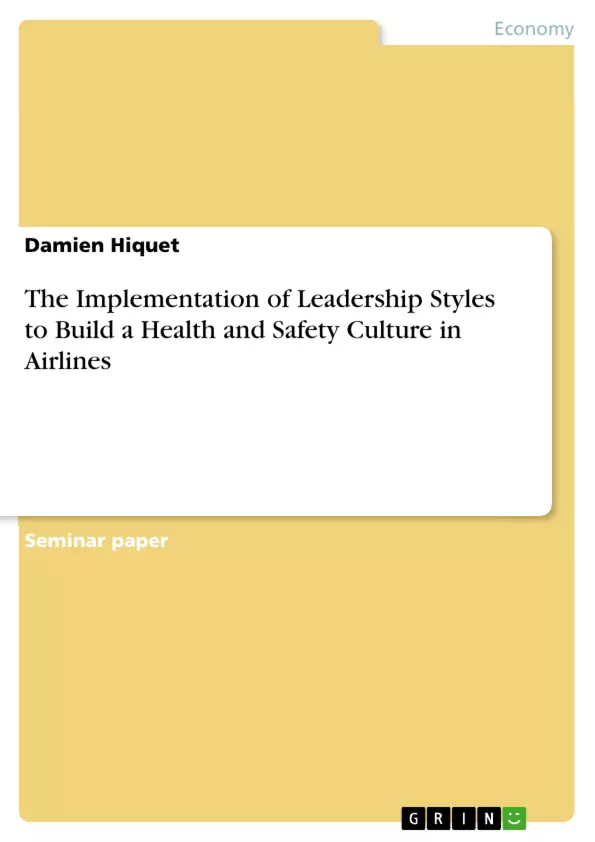The paper deals with the implementation of leadership styles to build a health and safety culture in airlines. Airlines are high-reliability organisations (HRO) evolving in an ultra-competitive and regulated environment where market differentiation is challenging (e.g., a limited option of original equipment manufacturers (OEM), routes) and thin profit margins. Often they are defined by their business models (i.e., legacy carrier (LC) or low-cost carrier (LCC)).
Because the industry is in perpetual motion and is publicly visible as most airlines care about their brand image, the slightest mismatch could result in financial, operational, and safety disasters. The types of leadership impact the success and culture of the organisation.
Inhaltsverzeichnis (Table of Contents)
- Introduction
- Discussion and critics of leadership theories
- SLT
- Transactional leadership and transformational leadership
- The implementation of leadership style to build health and safety culture
- Conclusion
Zielsetzung und Themenschwerpunkte (Objectives and Key Themes)
This document examines the impact of leadership styles on the development of a strong health and safety culture within the aviation industry, particularly highlighting the crucial role of leadership in achieving and maintaining organizational success amidst challenging circumstances.
- The influence of leadership styles on safety culture in the aviation industry.
- Analysis of various leadership theories, including charismatic, transactional, and transformational leadership.
- The significance of leadership in shaping organizational culture and driving operational efficiency.
- The challenges and complexities of implementing leadership styles to foster a positive safety culture.
- Case studies of prominent airline leaders and their impact on organizational success and safety.
Zusammenfassung der Kapitel (Chapter Summaries)
The first chapter introduces the aviation industry as a high-reliability organization operating within a demanding and competitive environment. It emphasizes the crucial link between leadership and organizational safety, drawing upon real-world examples such as the Boeing 737 MAX crisis.
Chapter two delves into the evolution and critiques of leadership theories, highlighting the development of various approaches such as the Great Man Theory, Dispositional Theory, and Weber's model of Charismatic leadership. It explores the strengths and limitations of different leadership styles, particularly emphasizing the effectiveness of charismatic leadership in times of crisis.
Schlüsselwörter (Keywords)
This work focuses on leadership styles, health and safety culture, aviation industry, high-reliability organizations, charismatic leadership, transactional leadership, transformational leadership, organizational culture, and safety performance.
- Citation du texte
- Damien Hiquet (Auteur), 2021, The Implementation of Leadership Styles to Build a Health and Safety Culture in Airlines, Munich, GRIN Verlag, https://www.grin.com/document/1151306



